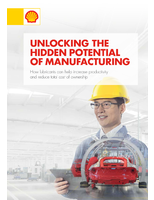LIA Helps Revolutionize US Manufacturing with laser technology.
Press Release Summary:
LIA representatives advocating laser-driven manufacturing joined 4 other subcommittees discussing growing usage of lasers in health, defense, energy, and communications during National Academies event on February 28 in Washington, DC. While work of all subcommittees was triggered by National Research Council's updated report, Optics & Photonics: Essential Technologies for Our Nation, LIA's efforts answer key goals of National Network for Manufacturing Innovation (NNMI).
Original Press Release:
LIA Aids NPI in Revolutionizing US Manufacturing with Laser Technology
With the US government running a full-court press to foster manufacturing innovation, the Laser Institute of America made the case for laser-based advanced manufacturing processes during a special presentation in the nation’s capital.
LIA representatives advocating laser-driven manufacturing joined four other subcommittees discussing the growing usage of lasers in health, defense, energy and communications during a daylong National Academies event Feb. 28. While the work of these five subcommittees was triggered by the National Research Council’s updated report Optics & Photonics: Essential Technologies for Our Nation, LIA’s efforts answer key goals of the Obama administration’s National Network for Manufacturing Innovation (NNMI).
The Optics & Photonics report issued a series of “grand challenges” to the laser community. In a multipoint presentation, Laser Mechanisms President Mark Taggart detailed highlights of an LIA-driven white paper drafted by the Advanced Manufacturing subcommittee he chairs.
Mark Taggart, Laser Mechanisms, Inc.
“I’m honored to have been selected by my peers to go to Washington, DC, and explain the unique challenges facing the US laser industry and the steps we need to take to maintain our global leadership in photonics,” Taggart said. “I need to thank the members of Advanced Manufacturing Subcommittee and the Laser Institute of America for all their hard work in preparing this white paper.”
LIA Executive Director Peter Baker initiated the subcommittee quickly after the Optics & Photonics report was issued last year. The urgings of the report, first issued in 1998, are being promoted through the National Photonics Initiative (NPI).
Magdi Azer, GE Global Research
“We will use LIA’s promotional resources to promote the NPI widely,” Baker asserted. “LIA will take a leadership role in areas where we have played a major role for many years, namely laser materials processing and particularly manufacturing including additive manufacturing. With respect to educating the manufacturing workforce, LIA has developed a significant and relevant suite of courses for our attendees, who are manufacturing people seeking to understand how lasers can improve their processes.”
First among LIA’s initiatives is a new series of online courses derived from its industry-leading conferences and workshops: ICALEO®, the Laser Additive Manufacturing (LAM®) Workshop and the Lasers for Manufacturing Event (LME®).
“The educational components of LAM and LME support the key recommendations” of the Optics & Photonics report, Baker explained. “Furthermore, LIA has led the way in the research underpinning laser materials processing and additive manufacturing at ICALEO and in our Journal of Laser Applications®.”
The initial draft of LIA’s white paper notes that photonics and optics advances in Europe and Asia are greatly streamlining and accelerating manufacturing and that “laser processes allow for reduction in total energy consumption versus traditional methods, making it ‘greener.’” The paper goes on to explain that “advanced manufacturing makes it possible to machine materials that are otherwise very difficult to process with conventional methods. The trend toward customization can be achieved with novel processes enabled by the inherent flexibility of the laser tool.”
As the NPI progresses, LIA will explore funding guidelines for realizing various laser-based manufacturing initiatives. Possible solutions for reaching NPI goals include fostering more advanced education and degrees in design and laser materials processing, creation of new standards and research to “prove out” processes, innovative financing for laser equipment purchases, and public outreach to inform the public about the benefits of lasers.
“The government can assist in removing the obstacles in employing advanced manufacturing techniques by investing wisely” in such solutions, LIA advises.
Any solutions to meet federal manufacturing goals “need to be industry-driven,” Baker says. “LIA looks forward to leverage our decades of experience and wealth of resources toward advancing NPI’s goals and helping US manufacturers harness the power — and profits — lasers offer.”



